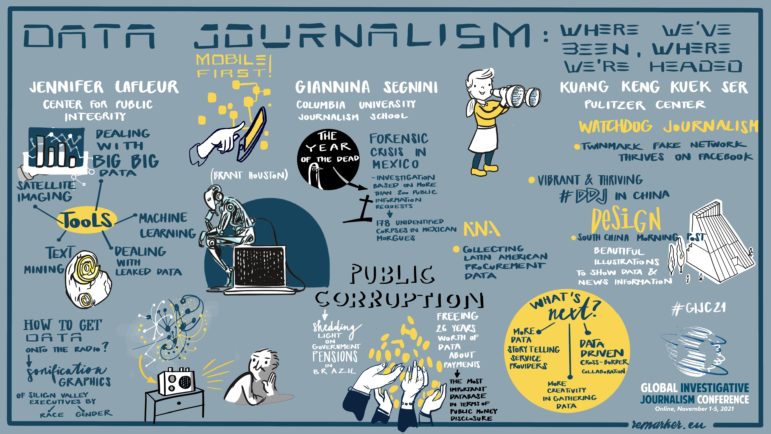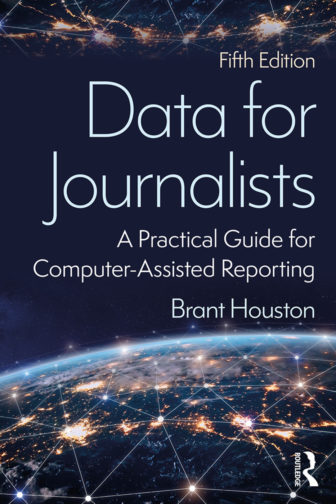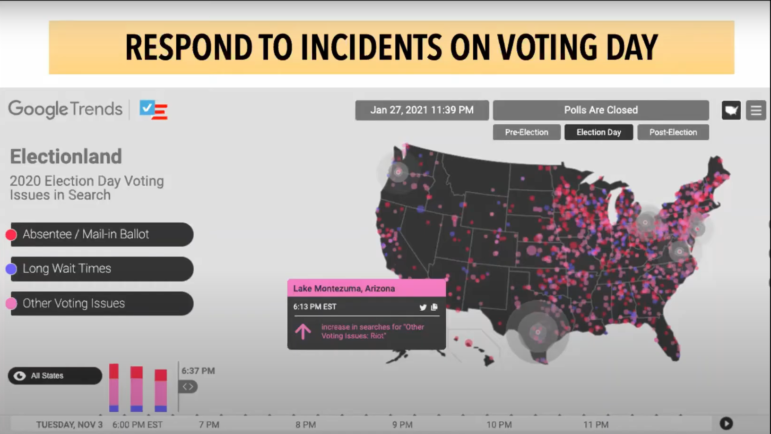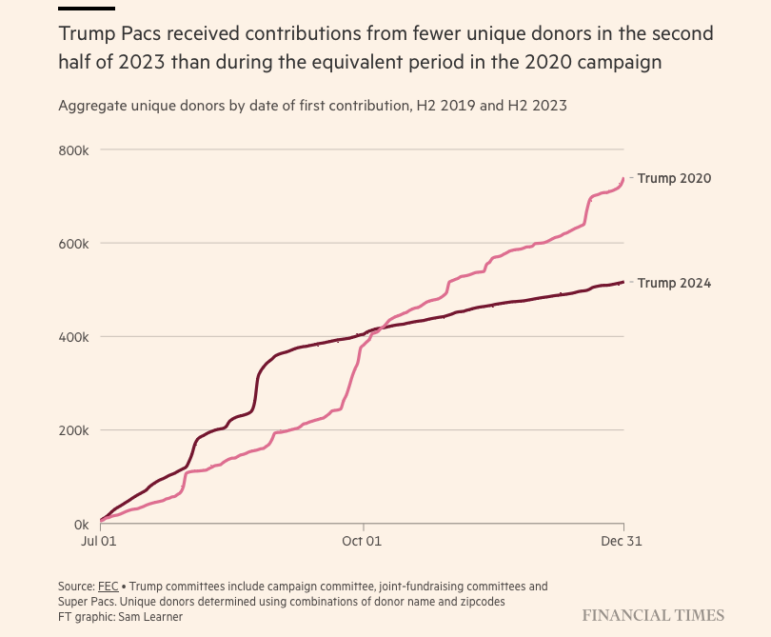

Data Journalists Offer Tools for the Future
Read this article in

Leading data journalists at #GIJC21 gave a global view of data journalism’s rapid growth and promising future. Illustration: Kata Máthé / Remarker
One of the most visited stories in the history of The Washington Post’s website is not a piece of writing. It’s a data visualization by Harry Stevens illustrating the exponential spread of the coronavirus and how different measures could slow its growth.
News outlets, pay attention: Data attracts readers.
That said, data journalism has come a long way since its humble origins in 1967, noted Jennifer LaFleur, senior editor at the Center for Public Integrity. “In the United States, Phil Meyer is kind of the grandfather of data journalism, and did a lot of work using surveys to cover the riots in the city of Detroit,” she said. But its use didn’t take off until the 1990s.
Since then, interest in using data in journalism has skyrocketed. While there were only about a hundred people at the first data journalism conference in 1993, these events today can attract as many two thousand journalists from around the world. 
LaFleur spoke at a session kicking off the data track at this year’s Global Investigative Journalism Conference (#GIJC21), along with three other leading data journalists: Brant Houston, Knight Chair of Investigative Reporting at the University of Illinois; Giannina Segnini, director of the Data Journalism Program at the Columbia University’s Journalism School in New York City; and Kuang Keng Kuek Ser, data editor at the Pulitzer Center. The group shared a grab bag of resources and tools, and highlighted trends for the future of data journalism. Here’s a quick overview of some of their tips and insights:

Brant Houston’s guide is a must-read for any reporter wanting to use data. Image: Courtesy of Routledge
Data Journalism Resources
Big data, managing leaked data, text-mining, satellite imaging, and machine learning are tools which may sound intimidating, but they are relatively easy to master with some practice. They are also available via inexpensive or open source software. Here are some guides and data sets to help you get started.
- Houston’s “Data for Journalists” is an essential guide for reporters wanting to integrate data into their stories. Now in its fifth edition, it has helped train a couple of generations of journalists.
- “Teaching Data and Computational Journalism” is a digital book by data journalists Charles Berret and Cheryl Phillips, licensed under Creative Commons, which covers the basics of the trade.
- GIJN’s Resource Center includes guides, tools, and methodologies on data journalism. See also its “How They Did It” series on innovative investigations.
- The UN Comtrade Database is a repository of official international trade statistics, and is a primary tool for investigations related to supply chains and global commerce.
- The Global Brand Database highlights companies that own nearly 50 million brands, their base countries, and their register number, often useful when investigating businesses.
- The Organized Crime and Corruption Reporting Project’s Aleph brings together a vast archive of current and historic databases, documents, leaks, and investigations.
Radio and Podcasts
Keng and LeFleur suggested the following resources to support data journalism on audio platforms, which are increasingly popular but require a different way of visualizing the data.
- For data sonification (converting data to audio), there’s a free tool developed by Google called Two Tone.
- Reveal has open source tools and audio data journalism examples.

An excerpt from Kuang Keng Kuek Ser’s presentation on how to use data in election reporting. Image: Screenshot taken from PPMN YouTube Channel
Into the Future
Data journalism has become an integral part of investigative journalism, and its swift pace of innovation will continue to push the boundaries of possible stories, panelists said. That means broader and more frequent use of satellite imaging, flight and drone tracking, R and Python programming languages, and the ability to deal with larger and more complex data sets.
The trends in data journalism aren’t just about technologies, the panelists added. It’s also about accessibility and reaching your audience. Among their key tips: Consider mobile first.








